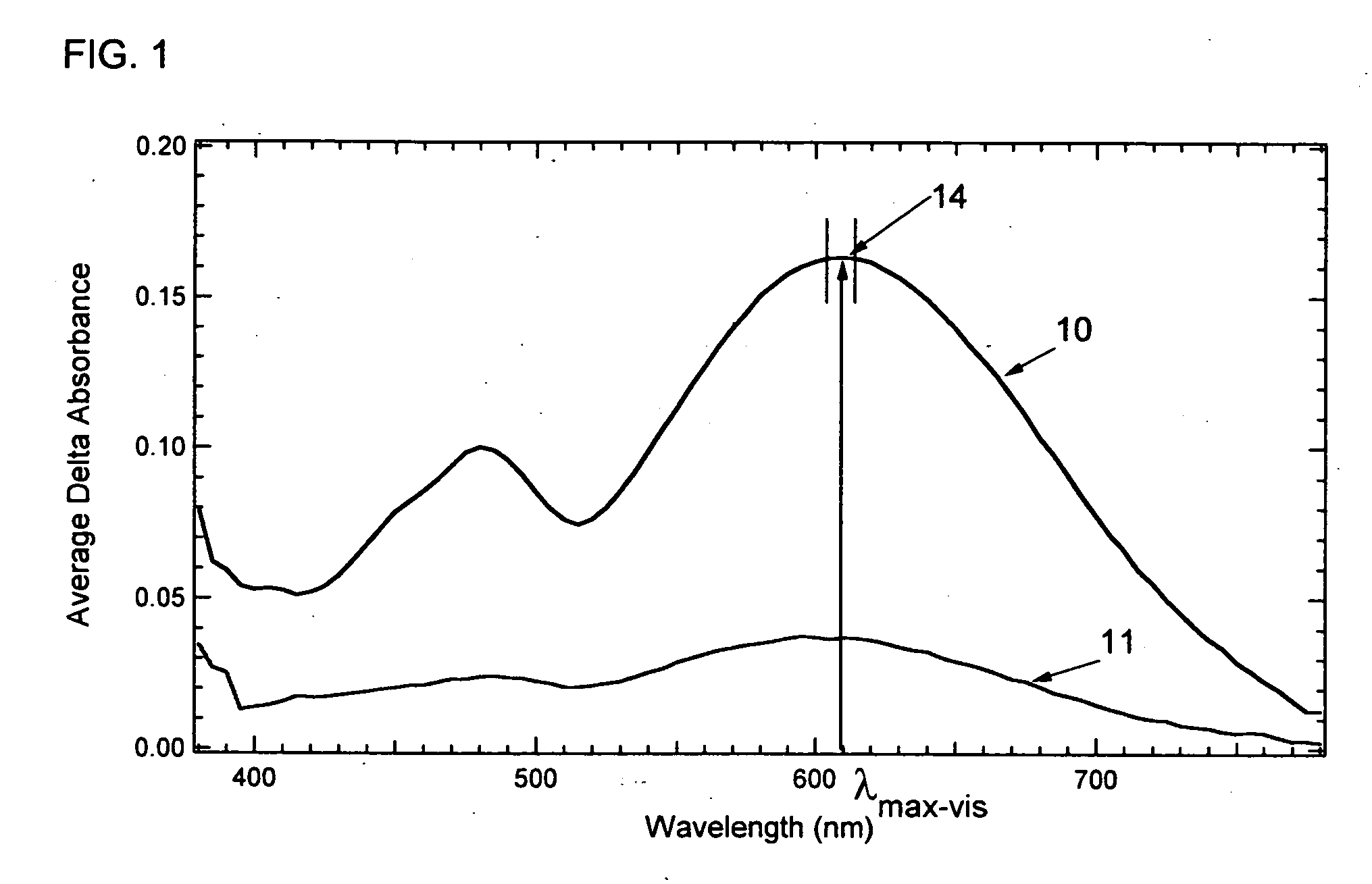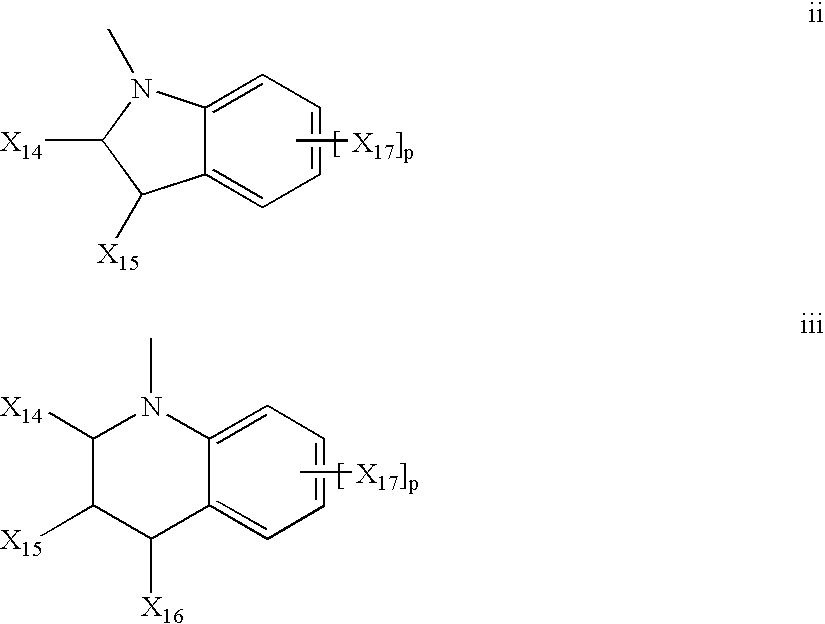Photochromic compounds
- Summary
- Abstract
- Description
- Claims
- Application Information
AI Technical Summary
Problems solved by technology
Method used
Image
Examples
example 1
Step 1
4-Fluorobenzophenone (64.5 g) and anhydrous dimethyl sulfoxide (DMSO) (200 ml) were added to a reaction flask under nitrogen. 1-phenylpiperazine (36.2 g) was added, and the suspension was heated to 180° C. After 2 hours, heat was removed, and the mixture was poured into 4 liters of water. The precipitate was collected by vacuum filtration, washed with water, dried in vacuum and recrystallized from acetone / methanol. GC / MS data showed that the resulting product (55 g, 89% yield), recovered as off-white crystals, has a structure consistent with 4-(4-phenylpiperazin-1-yl)benzophenone.
Step 2
4-(4-phenylpiperazin-1-yl)benzophenone (55 g) from Step 1 and dimethylformamide (DMF) (300 mL, saturated with acetylene) were added to a reaction flask. A sodium acetylide suspension (64 g of a 18 weight percent slurry in toluene, obtained from Aldrich) was added to the mixture with stirring. After 20 minutes, the reaction was poured into a stirred mixture of deionized water (3 L) and hex...
example 2
The procedures of Step 1, Step 2 and Step 4 of Example 1 were followed except that in Step 1, 4-piperidinopiperidine was used in place of 1-phenylpiperazine and in Step 4, 7,7-dimethyl-7H-benzo[c]fluoren-5-ol was used in place of 7,7-dimethyl-2-(4-phenylpiperazin-1-yl)-3-methoxy-7H-benzo[c]fluoren-5-ol. The recovered final product was a blue solid. An NMR spectrum showed that the final product had a structure consistent with 3-phenyl-3-(4-(4-piperidinopiperidino)phenyl)-13,13-dimethyl-indeno[2′,3′:3,4]naphtho[1,2-b]pyran.
example 3
Step 1
2,3-Dimethoxy-5-hydroxy-7H-benzo[C]fluoren-7-one, the product of Step 5 of Example 14 of U.S. Pat. No. 6,296,785 (50.13 g, 0.164 mol) and THF (500 ml) were added to a flask equipped with a bubbler under a nitrogen atmosphere and stirred at room temperature. A solution of 25 weight percent ethylmagnesium chloride in THF (124 ml, 0.36 mol) was added slowly and carefully causing the evolution of gas. The addition was completed in 30 minutes. The reaction was exothermic and caused the THF to boil. After 10 minutes, a water solution of 3 N HCl was added slowly with vigorous stirring until a slightly acidic mixture was obtained. A saturated sodium bicarbonate water solution was added. The organic layer was separated and the water layer was extracted with ethyl acetate. The recovered organic solutions were combined, dried over magnesium sulfate and concentrated. Crystals precipitated during the evaporation of the solvent. Chloroform was added to help with crystallization. The prod...
PUM
 Login to View More
Login to View More Abstract
Description
Claims
Application Information
 Login to View More
Login to View More - R&D
- Intellectual Property
- Life Sciences
- Materials
- Tech Scout
- Unparalleled Data Quality
- Higher Quality Content
- 60% Fewer Hallucinations
Browse by: Latest US Patents, China's latest patents, Technical Efficacy Thesaurus, Application Domain, Technology Topic, Popular Technical Reports.
© 2025 PatSnap. All rights reserved.Legal|Privacy policy|Modern Slavery Act Transparency Statement|Sitemap|About US| Contact US: help@patsnap.com



